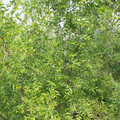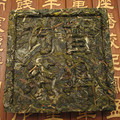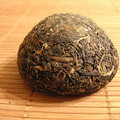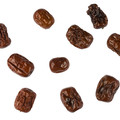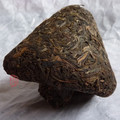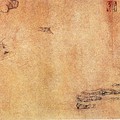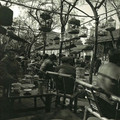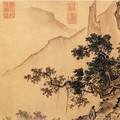Pu-erh tea
„Wo Dui - this new process produced a finished product in a manner of months that many thought tasted similar to teas aged naturally for 10–15 years and so this period saw a demand-driven boom in the production of Hei Cha by the artificial ripening method. “
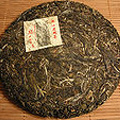
Quotes Tags: Pu-erh, Shu - Ripe Puerh
- Discussion: 0 comments
- Write a comment
Teas - Pu-erh
2003 CNNP Yi Wu Arbor Ming Chien „Hundred
 1 review
1 reviewProcessing: discontinuation of oxidation, rolling, sun drying, humidification, pressing...
2007 Jingmai Qiao Mu “0502”
 1 review
1 reviewUse Jingmai mountain arbor (Qiao Mu) tea which picked before Grain Rain (mid-April) as...
2005 (2015) Chawangpu Bulang Shan Old
 0 reviews
0 reviewsThis tea was found in friend´s warehouse in Menghai where was stored since 2005. Clean...
2007 Zhong Cha "Fu Lu Shou Xi" Raw Pu-erh
 0 reviews
0 reviewsFu Lu Shou Xi (福禄寿喜) - Fortune, Wealth, Longevity and Happiness
2007 Banzhang Tuocha Certified Organic
 1 review
1 reviewThis tuo is composed from spring material from Menghai area (most from Bulang mountain)...
2014 Laos Ban Komaen (Blue) Gu Shu Raw
 0 reviews
0 reviewsPhôngsali is a province of Laos, bordering Yiwu, Yunnan. It is located high in the...
Quotes - Pu-erh
„The terms "Xiao shu" (small tree) and "tai di" (terrace plantation) are often interchangeably used, but they should be given separate meanings. "Tai di" connotes high intensity farming, with the entire slope cleared & terraced to plant hedgerows & use of pesticide & fertilizer. But in many gu shu growing villages, there are also new tea plantations which are too young to be called gu shu (ie. less than 100 years old), but they aren't exactly "tai di" either. Many of these plants are growing next to old trees, in a bio-diverse forest clearing, with lots of space around them, not all are sprayed & fertilized. In the future, they will grow into "gu shu", until then we should call them "shen tai xiao shu" (naturally grown small trees)“
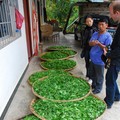
Quotes Tags: Pu-erh, Gushu, Tea production
Video - Pu-erh
Theme
Teas
NaKa 2013 autumn
 1 review
1 reviewThe Naka king makes its way with a robust and specific taste even in the autumn season. Very powerful tea...
2014 Yunnan "Bai Mu Dan" White Tea
 1 review
1 reviewFujain famous white tea "White peony" (Bai Mu Dan)- Taste similar but not the same. This tea come from tea...
2013 Spring Mengsong Baotang Gushu Maocha
 1 review
1 reviewMengsong is one of the oldest ancient tea area in Menghai. Baotang old village is located next to the...
Tea by region
We will help you with tea selection.
Do you like quality loose tea?
We will help you to find the right one for you. Be inspired by tea ratings of other tea lovers. Rating stars could help you.


Review your cup of tea.
Review the tea you are drinking and help other tea lovers to find the right cup of tea.






 Shops
Shops Share on Facebook
Share on Facebook






